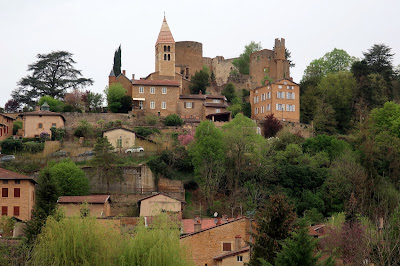Footnotes to a Conversation, April 5, 2021
Food & Wine
This would not go over well in Saskatchewan! The town of Glastonbury in the UK has pledged to go completely vegan by 2023. “While locals will not be compelled to adopt a vegan diet, shops and hospitality in the town will no longer be permitted to sell animal products, so determined carnivores will have to travel elsewhere to purchase meat and dairy. The keeping of livestock within the town will also be prohibited, as will meat barbecues.”
Food is one of the more obvious ways that we connect with our heritage, but it can be difficult for newcomers to find the fruits and vegetables that were available in their home countries. It’s exciting to see newcomer farmers growing and selling foreign food. Leslie Wiser “primarily grows vegetables that come from her Asian and German-Polish Jewish heritage on 1.5 acres in Sebastopol, California. This includes ingredients such as bitter melon, Chinese bald head mustard and Southeast Asian herbs that many of her customers—from chefs to immigrant families—had been unable to find in the United States.”
Whatever next! Winemakers are now experimenting with underwater wineries. “The logic is that underwater conditions mimic the crucial ageing factors that are thought to contribute so much to the flavour of wine, such as constant temperature and the absence of light. Winemakers soon went further, arguing that the watery cellar was leaving its own, singular imprint on the wines.”
“Walk around your neighborhood and count the house or building colors you see. Four million hues of grey? Check. Lots of tans and browns? Definitely. An abundance of white and off white? Absolutely. . . . Much of cities’ avoidance of color is rooted in colonial and Puritan roots. In some European cultures, white is often seen as pure and good, while color has often been linked to the primitive and the superficial. Goethe, a German playwright and novelist, captured the origins of the European anti-color stance when he wrote, ‘Men in a state of nature, uncivilized nations and children, have a great fondness for colors in their utmost brightness,’ whereas ‘people of refinement’ avoid such vivid and saturated colors. This historic association of good taste with quiet colors has led to neutrals as a sign of moral superiority.”
Europeans didn’t have a name for the colour orange until the 16th century “when orange trees were brought to Europe from Asia by Portuguese merchants.” Prior to that date it was called yellow-red or saffron. The word for orange in India and China is still derived from the word for saffron and in Buddhism is connected to “perfection and the highest state of illumination.”
As a child, I loved playing with my Barbie dolls and never gave a thought to them encouraging sexist stereotypes. What mattered to me was creating stories and acting them out. Upper-class Roman girls from the second to the fourth century had dolls too, “made from bone, ivory, or cloth, the dolls range in length from 15 to 30 centimeters and resemble upper-class adult women, with molded breasts and delineated genitalia.” The dolls reinforced the girls’ expected appearance and roles but could also be used creatively. “Articulation gave dolls the potential to be active in the hands of Roman girls, and they too had the potential to be active as historical agents rather than passive recipients of ideas and ideals while at play . . . . With a doll at her disposal, a young girl could role-play as a wife or mother, but she could also inhabit the role of athlete, stage actress, or any other type of woman she knew or imagined.”
Footnotes to a Conversation is a weekly Monday feature covering an assortment of topics that I’ve come across in the preceding week – books, art, travel, food, and whatever else strikes my fancy. If you share my love of nature, I suggest you also read EcoFriendly Sask that I publish in collaboration with my brother, Andrew.








Comments